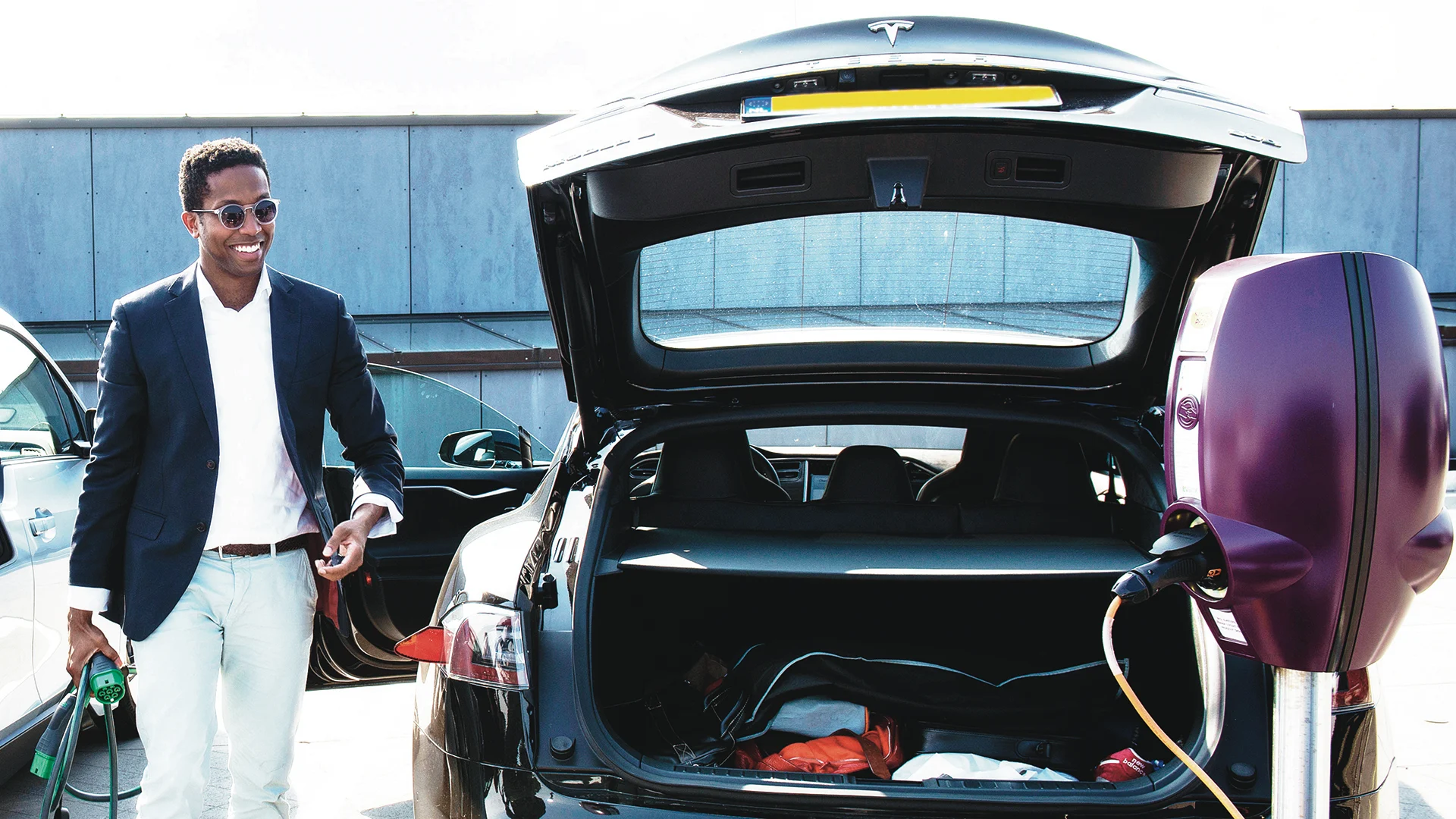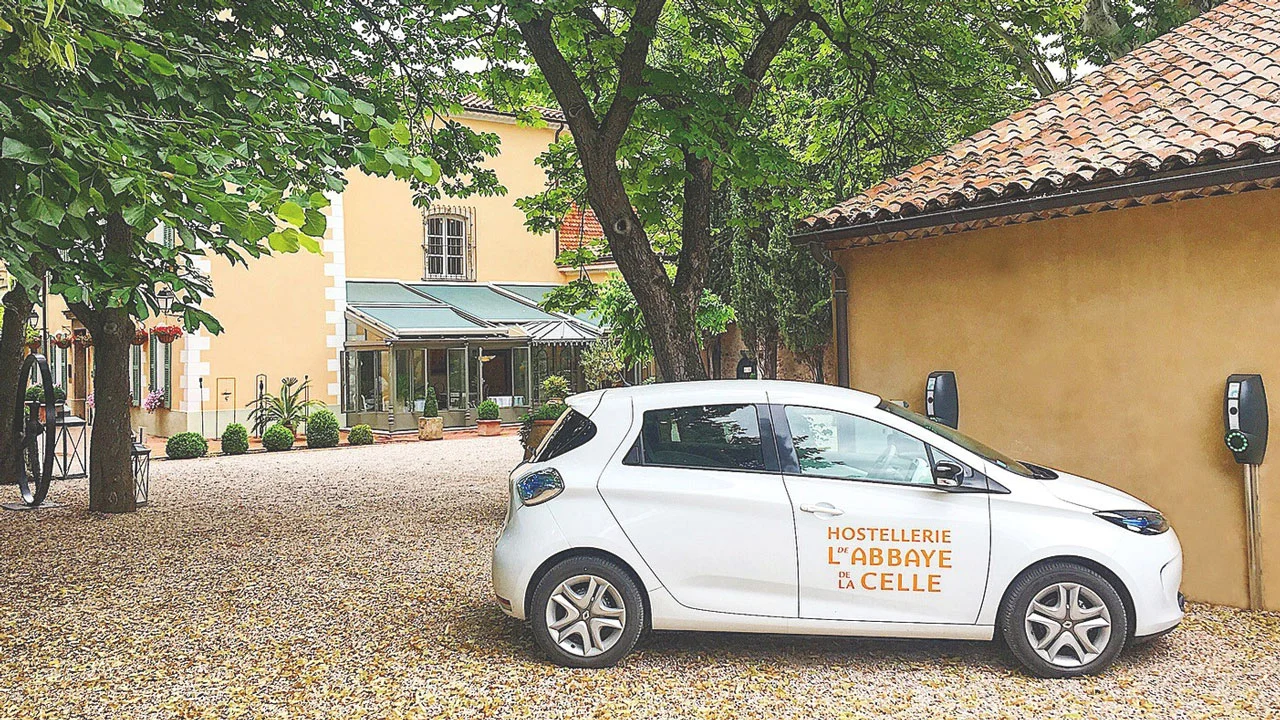Last updated on July 19, 2022 These days, almost half of all people looking to buy a new car are seriously considering going electric. Prices are dropping, the selection of models is getting broader, and government incentives are making it all the more appealing. But despite all the excitement around electric vehicles, a full 19 percent of potential EV drivers still worry about running out of juice on the road. This concern is completely understandable, but it’s worth noting that 41 percent of current EV drivers never face any issues with charging their cars when they need to. Unlike traditional gas-powered vehicles, which rely solely on filling up at gas stations, EV owners have a wide range of options for recharging their vehicles. So, where exactly do EV drivers typically charge their cars? In this post, we’ll explore the five most common places where EV drivers charge their vehicles and what the future holds for the expansion of EV charging infrastructure. The answer to that depends on several factors, including the availability of charging stations in your area and what feels most convenient for you. According to our Mobility Monitor report, which surveyed hundreds of EV drivers (and potential EV drivers) across Europe, there are five primary locations where EV drivers currently charge their electric vehicles or plug-in hybrids. By far, the majority (64 percent) of EV drivers reported charging their vehicles at home. The second most popular location for charging is at work (34 percent), followed by public parking lots (31 percent), gas stations (29 percent), supermarkets (26 percent), and shopping malls and department stores (22 percent). Let’s dive deeper into each of these top five locations where EV drivers currently charge their electric cars. As you can see from the statistics above, home charging is hands-down the most popular method for EV owners. At present, 64 percent of EV drivers charge their vehicles at home, and projections suggest this trend will persist as EVs continue to gain popularity worldwide. According to PwC’s forecasts, this trend will likely hold strong. Why is home charging so prevalent? Two main reasons stand out: cost and convenience. Since you only pay for the electricity consumed, charging at home is almost always the cheapest way to keep your vehicle running. Additionally, rather than needing to visit a gas station, wait in line, pump gas, and then pay inside, you can simply carry on with your day—or even sleep soundly knowing your car will be ready to go in the morning. Curious about charging your EV at home? Check out our comprehensive article for answers to the most frequently asked questions about home charging. From how to set up an EV charger at home to understanding charging speeds, costs, and best practices, you’ll find everything you need to get started. While home charging reigns supreme in terms of convenience, workplace charging isn’t far behind. Our research shows that 34 percent of EV drivers already charge their vehicles at work, and many more would like to if given the opportunity. It’s encouraging to see that many forward-thinking companies are already adapting to meet the evolving needs of their employees with EV charging solutions. However, there’s still room for improvement. A further 27 percent of EV drivers express a desire to charge at work, yet 65 percent feel there aren’t enough workplace charging options available. Providing EV charging at work offers employees a highly convenient perk that’s increasingly valued. Moreover, not all EV drivers have the option to charge at home, making workplace charging even more essential. Learn more about why EV charging is vital for any workplace and how it can enhance employee satisfaction for years to come in our recent blog posts. Coming in third place in terms of popularity is charging at gas stations. Our research indicates that 29 percent of European EV drivers regularly charge their vehicles at gas stations, with an additional one in five expressing interest in doing so if the option becomes available. One of the appeals of gas station charging is the availability of what’s known as DC fast charging. Also referred to as Level 3 charging, this method is the fastest available, capable of restoring a vehicle’s battery in mere minutes compared to the hours required by other methods. While charging at home or work may take a portion of the day or require an overnight session, some Level 3 chargers can get you back on the road in just 15 minutes (depending on your vehicle). Learn more about the different charging levels here. Beyond homes, workplaces, and gas stations, EV drivers can now charge their vehicles virtually anywhere they go—whether it’s a shopping center, theater, commercial parking lot, hotel, restaurant, or beyond. In fact, according to our research, 26 percent of EV drivers charge their cars at supermarkets, while 22 percent enjoy charging their EVs while shopping or dining at malls and department stores. Most EV models can charge around 20-25 percent in an hour or two, so you can easily enjoy a meal or a shopping trip without ever worrying about your car’s battery running low. With the internet at your fingertips, it’s simple to find nearby hotels or restaurants offering EV charging. Some even provide free charging as part of their loyalty and rewards programs. Take a look around your local area—you might discover some hidden gems. According to our research, 31 percent of EV drivers in Europe use public chargers regularly. These chargers not only help accommodate the growing number of EVs on the road but also include some fast-charging options that reduce charging times, allowing more vehicles to recharge efficiently. Public charging is critical for the widespread adoption of electric mobility. One of the biggest challenges cities and governments currently face is ensuring there are enough charging stations to meet the rising demand. To prepare for the future of electrified transportation, having sufficient charging points is essential. That’s why, in 2014, the EU mandated that there should be a maximum of 10 EVs per Public Charging Point (PCP) across Europe to ensure adequate access for all EV drivers. By 2021, the ratio had improved to approximately 7.5 EVs per PCP. While most countries currently have enough charging stations, the demand will undoubtedly grow significantly in the coming years. For reference, the International Energy Agency (IEA) predicts that by the end of the decade, there could be as many as 145 million EVs on the world’s roads. This means you’ll likely see many more public EV charging stations popping up soon. If you’re curious about finding public charging stations in your area, you can use specialized EV charging maps online or simply search for “Public charging stations near me†on Google to get an overview of your options. Many countries have recognized the importance of advancing electric mobility to combat rising CO2 emissions. Europe, the US, and China have already made significant strides in establishing and expanding their charging networks. As governments worldwide increase funding to accelerate EV adoption, demand for charging infrastructure is expected to rise sharply. Between 2020 and 2026, the global EV charging infrastructure market is projected to grow at a Compound Annual Growth Rate (CAGR) of over 30 percent. Installing charging stations in homes, along roads, and within various businesses is crucial for building a robust infrastructure to support the growing adoption of EVs. To learn about EV charging incentives you or your business can take advantage of in Europe, check out our up-to-date overview. Electric mobility is becoming the norm, and the right charging infrastructure will be essential to keep pace with the increasing demand. EV driving will not only transform the way we commute but also give us the freedom to choose how and where we recharge our vehicles.  Many new electric drivers are puzzled by the experience of driving electric and charging their vehicle while parked. The variety of charging locations is one aspect, but what about the EV battery itself? How far can you travel on a single charge? How much does it cost to charge? How long does it take, and what’s the difference between various charging levels? Discover all this and more in our comprehensive EV charging guide. Summer Handmade Decorations, Glass Decorations, Wood Decorations IDesigns , https://www.idesignshome.comWhere Can I Charge My Electric Car?

1. Charging at Home

2. Charging at the Workplace

3. Charging at Gas Stations

4. Retail and Hospitality

5. Public Charging
EV Charging Infrastructure Forecast
Learn More About EV Charging
Last updated on July 19, 2022 These days, almost half of all people looking to buy a new car are seriously considering going electric. Prices are dropping, the selection of models is getting broader, and government incentives are making it all the more appealing. But despite all the excitement around electric vehicles, a full 19 percent of potential EV drivers still worry about running out of juice on the road. Summer Handmade Decorations, Glass Decorations, Wood Decorations IDesigns , https://www.idesignshome.com
"